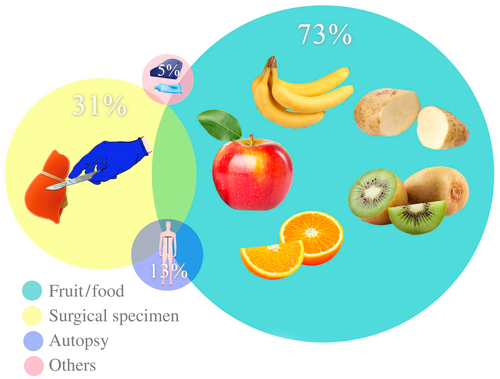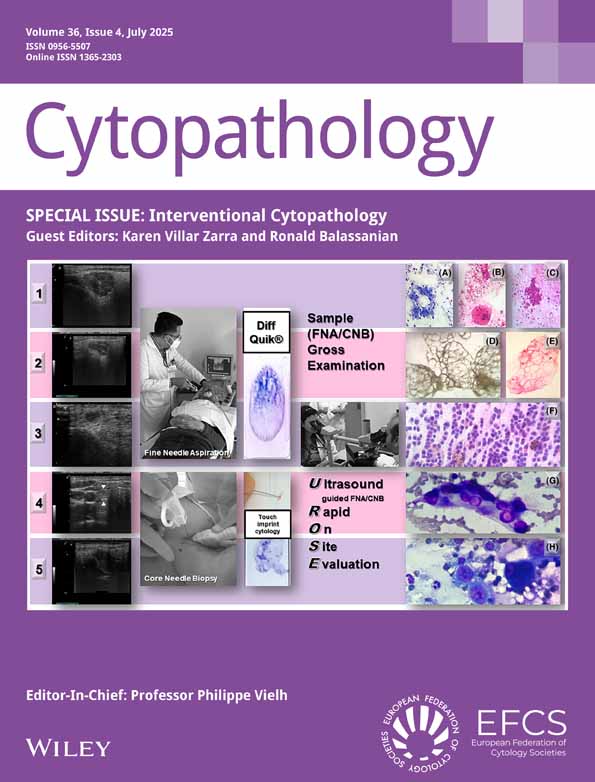How do cytopathologists learn fine needle aspiration techniques? An international survey
Abstract
Introduction
Fine needle aspiration cytology (FNAC) is a widely accepted diagnostic technique, but performance varies according to expertise. Little is known about variation in FNAC training practices worldwide. We surveyed pathologists using social media networks to determine FNAC training practices internationally.
Design
Pathologists were surveyed on questions related to FNAC simulation training using direct messaging on the Twitter and WhatsApp platforms. Survey responses over a period of 2 weeks were collected.
Results
In total, 149 pathologists participated (96.1% response rate). The respondents came from 24 countries and 87 institutions. The majority of the pathologists (63.8%) performed FNAC directly on patients for the first time. Only 36.2% of them had simulation instruction during their training. It was performed on food items such as fruit (64.8%), surgical specimens (37.0%), autopsies (13.0%) and others (9.3%), including commercially available phantom simulators for ultrasound-guided FNAC (US-FNAC) (two pathologists).
Discussion
Most pathologists did not receive formal training in a simulated environment, and of the pathologists who had simulation instruction, food items were commonly used for education. A few participants used a commercial US-FNAC simulator, but since most pathologists perform FNAC by palpation, this method of simulation training is not applicable to many practices. Social media is an effective and efficient way to perform survey research, yielding a very high response rate.
Graphical Abstract
The following study reveals a deficient practical training in fine needle aspiration cytology among cytopathologists through a questionnaire carried out using social media networks at an international level and how simulation-based methodologies are positioned as a standard in medical education, preserving patient safety.
CONFLICT OF INTEREST STATEMENT
Eduardo Alcaraz-Mateos is the inventor of the patented models WO/2016/185077 and WO/2017/109241, together with the University of Murcia, Spain, and there is a licence agreement with Sawbones (Pacific Research Laboratories, Inc., Vashon Island, WA, USA) with FioNA™ being the marketed model. However, there is an agreement with the Spanish Subdivision of the International Academy of Pathology (SEAP-IAP) for the transfer of royalties, if any. Eduardo Alcaraz-Mateos is also the inventor of the free and non-profit application for mobile devices SimInPath®.
Open Research
DATA AVAILABILITY STATEMENT
The data that support the findings of this study are available from the corresponding author upon reasonable request.





